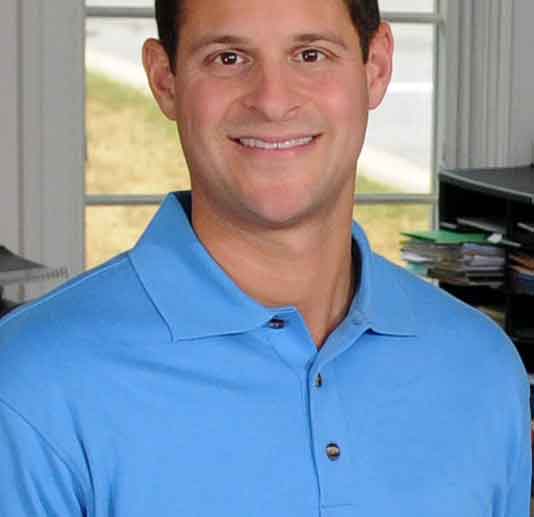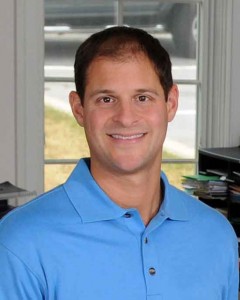
Ride Horses Better: Improve Equestrian Performance and Prevent Injury
By Dr. Chad Laurence
Rev up your engines, with horsepower, that is! Equestrian events are here! Whether a hack, jump, race, or show, you may find that pain, muscle spasms, and imbalance prevent personal best performance when riding. Pain in the lower back, neck, hips, shoulders, knees, and wrists often sidelines riders and can limit participation in the equestrian activities they enjoy. Research indicates that tens of thousands of people are hurt riding horses each year. Often, their conditions are the result of not only traumas and falls, but also abnormal spinal structure. 
In the U.S., there are almost two million American horse owners, and seven million riders. According to the U.S. Equestrian Federation, children under the age of 18 make up approximately 23 percent of their membership. Although horse racing is the most highly publicized of the industry, four times as many people are involved in recreational riding, with an astounding three million people participating in horse shows each year. Injuries are an unfortunate part of any sport, and quite common in equine activities. The average rider is 13 feet from the ground when sitting on horseback, and an average horse can travel at speeds of 40 mph. Should a horse stumble or misstep, a rider can experience quite an impact. Approximately 80,000 riders each year are admitted to the emergency rooms due to horse riding injuries; the majority of which occur in the head, back, pelvis, leg, and shoulder regions, often leading to fractures, concussions, and other soft tissue and musculoskeletal injuries.
A rider’s body undergoes a variety of stress and spinal structural changes, due to several equine activities, such as mucking stalls, moving hay and bedding, grooming, picking hooves, holding and leading excited horses, and pushing wheel barrows. In addition to falls, all of these strenuous activities can cause shoulder, arm, and back injuries, as well as knee and leg injuries. These injuries coupled with abnormal posture can cause riding insufficiencies. Do you ever notice when riding your horse that it will continually veer to the right or left, regardless how you ride? Or perhaps one of your legs feels more soreness than the other? Or maybe while jumping, your horse favors one side of the jump to the other side. Perhaps when riding, your horse fails to turn or bend well. This can be due to abnormal spinal structure.
Rider Gait and Horse Gait
Many riders have abnormal gait, due to falls, laborious activities, and heavy lifting. When looking in the mirror, do you notice one shoulder higher than the other? Or maybe your head tilts in one direction or your hips are twisted? Perhaps you notice that one of your hips is higher than the other? This is most likely due to an abnormal spinal alignment, which can cause you to ride ineffectively. Misalignments in your spine and pelvis can also cause back, knee, and foot pain to occur. When the spine is misaligned, throwing posture off balance, the resulting aches and pains typically stop a person from competing or participating in a sport. Often times, this is because abnormal spinal structure can cause a rider to unknowingly compensate their body, causing unbalanced weight-bearing on the horse. Ultimately, this can lead to lower back and hip pain. Ever feel like your seat bones are out of alignment? This can cause the horse to pick up one canter lead easier than the other, causing a training issue and frustration for both the rider and horse. If a rider has crooked spinal structure, it can cause a horse to walk with a corked gait. When the rider’s body is straight and correctly aligned, it is much easier to keep the horse straight, enabling the rider to move forward and bend around circles correctly. A rider with even hips can get their leg down and “around” the horse easier. Equestrians tend to blame their horse for their lack of balance and asymmetry, when in most cases; it is the actual rider that is need of spinal balance and structural chiropractic care.
Corrective Spinal Structural Care
Our chiropractic practice is chock-full of horse people, who present with a variety of ailments. They choose to address their primary condition of abnormal biomechanics, with spinal and extremity correction. Many riders find that their horses perform better due to their own spinal correction. When presenting to our office, we do a thorough exam including range of motion analysis, spinal structure check, and a variety of orthopedic and neurological tests. We then take radiographs of the spine that can conclusively show what specific corrective measures need to be taken. We then use a series spinal adjustments and specialized restorative equipment to gently mold and shape the spine back to its normal position.
Whether participating in dressage, jumping, racing, or any other equestrian activity, preparation ahead of demanding physical activity is time well spent to avoid unnecessary injuries as well as contribute to a healthier body overall. Chiropractic is a growing profession not only caring for riders, but for horses as well. In one of the most competitive and intense sports, gain an edge on your competition, by correcting your own spinal biomechanics.
Dr. Chad Laurence is a Doctor of Chiropractic, and is one of less than 500 doctors’ world wide to be recognized as a distinguished fellow of Chiropractic Biophysics. His practice focuses on structural correction of the spine, nutrition, and massage therapy, and has worked with equestrians since 2002. He is a prominent speaker and writer, and he has been voted Best Chiropractor of Delaware by numerous publications. His practice is located near Wilmington, Delaware and Kennett Square, Pennsylvania, at Corrective Chiropractic, 7503-A Lancaster Pike, Hockessin, Delaware. You can contact him with questions or to schedule an appointment, call 302-234-1115, drchad@correctivechiro.net , or on the web at correctivechiro.net . You can also follow Dr. Laurence on twitter.com/drchadlaurence, and on Facebook https://www.facebook.com/CorrectiveChiroHockessin
Meet Dr. Chad Laurence
Owner and educator Dr. Chad Laurence is in private family practice at Corrective Chiropractic in Hockessin, Delaware. After earning his doctorate from Life University of Chiropractic in Marietta, Georgia, Dr. Laurence began practicing chiropractic in 2000. Before his chiropractic studies, Dr. Laurence received a BS degree in Microbiology from PennsylvaniaStateUniversity.
Dr. Laurence is one of only two doctors in Delaware who is certified in Chiropractic Biophysics® (CBP®), and is a Distinguished Fellow of the CBP technique. Presently, fewer than 400 doctors worldwide are certified in Chiropractic Biophysics®, which is a corrective system that attempts to reestablish normal structural spinal alignment, thus removing nerve interference caused by misaligned vertebrae (“subluxations”) and restoring optimal body function. Research results published in peer-reviewed scientific and medical journals support Chiropractic Biophysics® more than any other chiropractic technique.
With a focus on structural spinal correction, nutrition, education, and specific training, Dr. Laurence is able to relieve symptoms for individuals suffering with physical problems, including neck and low back pain, carpal tunnel syndrome, headaches, arthritis, and intestinal difficulties. His approach is also particularly successful at helping children with chronic ear infections, asthma, allergies, ADD/ADHD, infantile colic, and childhood immune system concerns.
Dr. Laurence is an experienced presenter who has been invited to speak in a variety of venues. He has published articles in regional health publications, including The News Journal, Healthy Results, Delaware Today, the Kennett Paper, and Progressive Health. Dr. Laurence and Corrective Chiropractic have been voted “Best Chiropractor in Delaware” numerous times by readers of the Wilmington News Journal, Community News, and the Daily Local. He currently serves on the boards of the Southern Chester County Chamber of Commerce, Arthritis Foundation of Delaware, and is a long-standing member of Longwood Rotary.
For more information about Dr. Laurence or Chiropractic Biophysics (CBP), call Corrective Chiropractic: 302.234.1115. Additional details are also available on the practice website: correctivechiro.net



